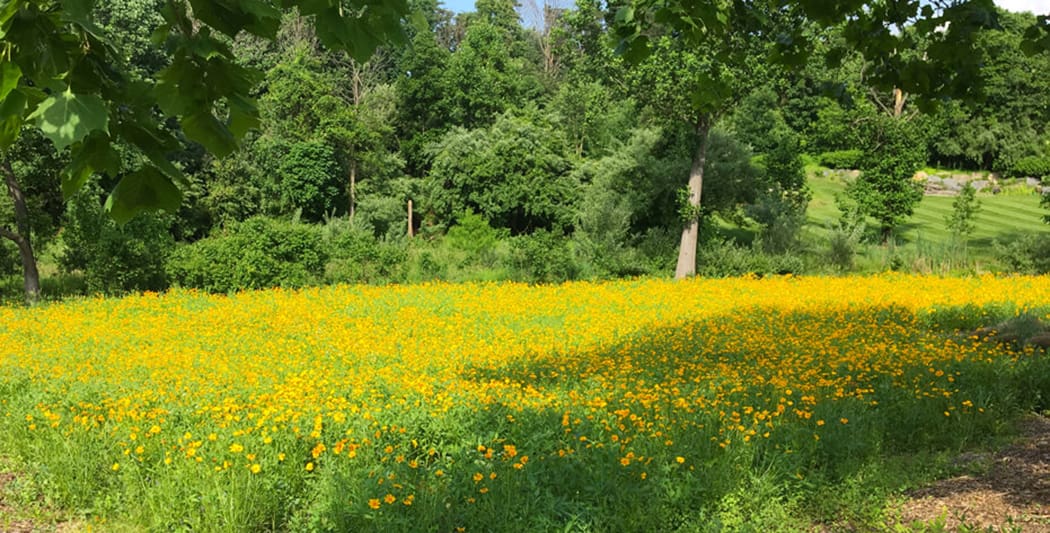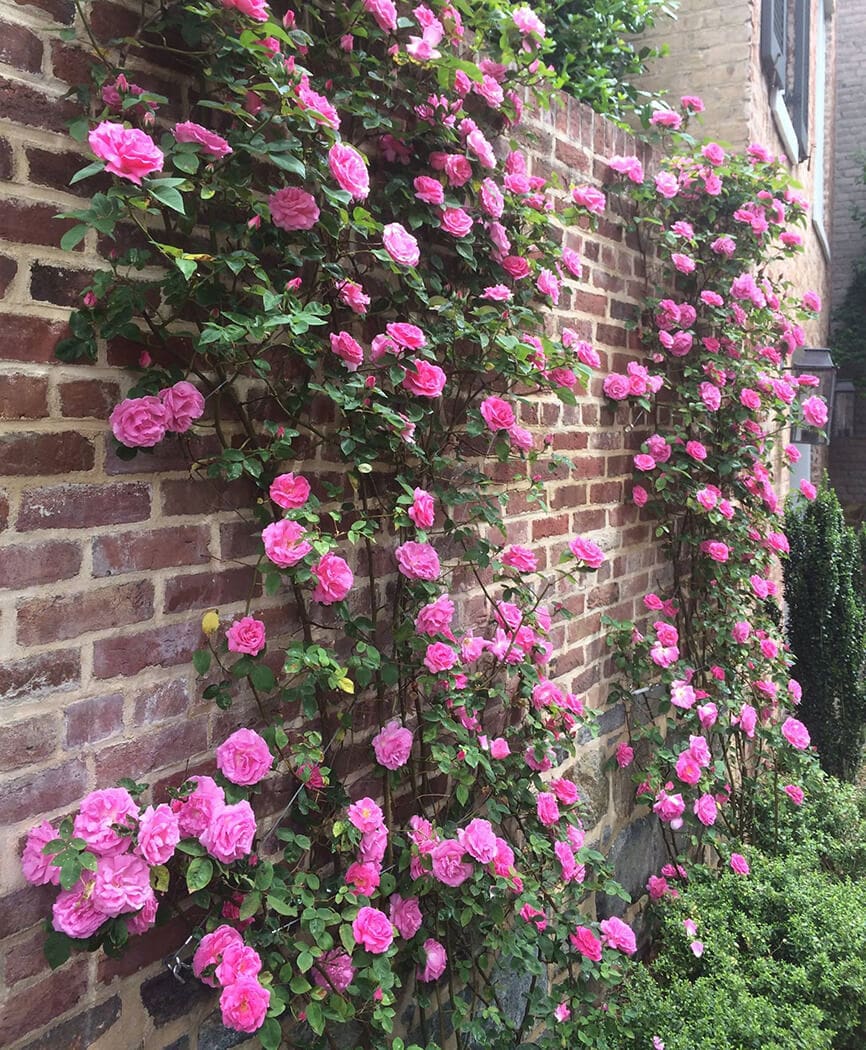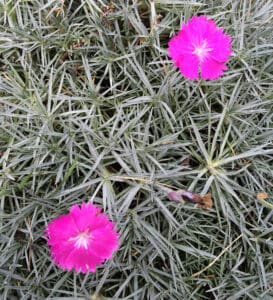 Many homeowners express a wish for a more spontaneous, natural-looking style of landscaping that is environmentally friendly. Increasing the percentage of perennial plants throughout your landscape is the surest way to accomplish that goal. But many homeowners worry that if they don’t choose the right assortment of plants and cultivate them properly the effect will look unkempt.
Many homeowners express a wish for a more spontaneous, natural-looking style of landscaping that is environmentally friendly. Increasing the percentage of perennial plants throughout your landscape is the surest way to accomplish that goal. But many homeowners worry that if they don’t choose the right assortment of plants and cultivate them properly the effect will look unkempt.
The Natural Look of Perennials
The desire for a more natural-looking garden (think English garden) is a revival of the loose, colorful style that prevailed in the 19th century before a more formal style came along with the invention of the neatly kept modern lawn, and tightly trimmed boxwood hedges and foundation plants that we now see defining home exteriors.
It is true that perennials, especially varieties native to your climate region require minimal maintenance or resources to succeed. However, choosing the right varieties for the conditions on your property (microclimates) is the key to success in perennial gardening.
It’s best to seek advice from a certified horticulturist who is familiar with the soil, sun and moisture requirements of the different plant varieties adapted to your region. A horticulturist is a landscape professional who understands how to “stage” and layer plantings to follow bloom cycles. Horticulturists know how and when to prune and fertilize plants so they will mature naturally into the shape they are intended to take.
“Staging” Your Perennial Garden
A perennial is a herbaceous plant that returns each year from its roots. These flowering plants and colorful grasses are becoming the wave of the future in landscaping. As a class, perennials are drought tolerant due to their deep root systems. They naturally provide food and shelter for pollinators including butterflies, bees, and hummingbirds–all of which add to the charm of your gardens while improving their overall health.

Different types of perennials bloom at different times of the year. Most will bloom once during the season–for approximately four weeks–then step back to provide an attractive leafy background for the next round of bloomers. That is why it is important to carefully “stage” your planting beds with an awareness of the bloom cycles.
Ideally, you want to have your plants grouped and layered in a composition where something is always in bloom. One plant will bloom in early May, the other blooms mid-May, and yet another emerges near the end of June. While one plant is in full flower, another one is getting ready to take its place in the spotlight.
Another aspect of planning a perennial garden is selecting color combinations that complement each other. The well-planned perennial garden will give you rolling blooms that keep changing color combinations from spring to mid-summer to fall.
A garden designer thinks of the color combinations (purples, blues, yellows) in relationship to each other during the plant selection process. You want colors that make sense when mixed together in groupings.
Caring for Your Perennials
Depending on the plant varieties you’ve selected for your gardens, you’ll have a maintenance schedule that spells out when to prune and fertilize the different plant varieties according to their specific needs.
1 Deadheading
 One technique that helps to maximize aesthetics of certain perennials is a practice known as “deadheading”. That is, pinching off the spent blossoms to stimulate repeat blooming. Catmint, coneflowers, Russian sage, daylilies–all of these will bloom multiple times during the season if they are deadheaded. You may see as many as three bloom cycles over the summer with certain species such as roses and butterfly bushes. However, it is important to apply this technique correctly or you will lose blossoms.
One technique that helps to maximize aesthetics of certain perennials is a practice known as “deadheading”. That is, pinching off the spent blossoms to stimulate repeat blooming. Catmint, coneflowers, Russian sage, daylilies–all of these will bloom multiple times during the season if they are deadheaded. You may see as many as three bloom cycles over the summer with certain species such as roses and butterfly bushes. However, it is important to apply this technique correctly or you will lose blossoms.
2 Pruning & Cutbacks
The same holds true for pruning. There are different techniques depending on the plant and what you want it to do. For example, there are certain perennials that you do not cut back in the fall because you want the plant to spread seed, and to provide food and shelter for insects, birds, and wildlife over winter, and to have the plant structure for visual interest in winter.
3 Thinning & Transplanting
This is true of many varieties of perennials: As they grow over the years, they multiply by clumping, generating new plants through the roots. So at certain times of year (fall or early spring when plants have stopped vigorous growth and it is cooler), it is a good practice to break them apart and space them farther apart or relocate them.
Unlock the full potential of your lawn and gardens!
What’s the difference between a conventional landscape company and one whose staff understands design, horticulture, and landscape systems? To find out, click the button below.
 Perennials spread at different rates so it’s important to keep an eye on them to make sure an aggressively growing plant doesn’t overtake others and crowd them out.
Perennials spread at different rates so it’s important to keep an eye on them to make sure an aggressively growing plant doesn’t overtake others and crowd them out.
Including a 40% mix of perennials throughout your garden is beneficial to the health and vibrancy of all your garden plants because perennials attract pollinators.
Seek the advice of a horticulturally certified garden designer who understands the bloom cycles of the different plant varieties, knows how to layer groupings of plants and can help you plan color combinations. Perennials don’t require a lot of care, but they do require knowledgeable care at regular intervals during the growing season.
Are you wondering how to bring out the fullest expression in your landscape and gardens? Our eBook: Choosing the Right Kind of Landscape Maintenance Firm, is full of valuable information to help you understand the fundamental differences between landscape maintenance companies.